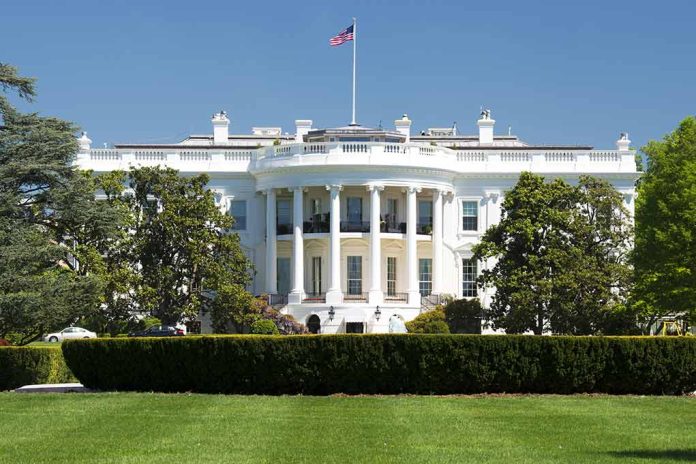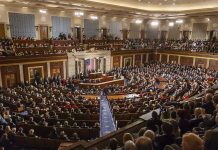
A landmark trade deal between the U.S. and China under President Trump’s administration has revitalized market confidence, as seen by a significant rise in the Dow.
Key Takeaways
- The US and China have agreed to reduce import taxes on goods traded between them, marking a de-escalation of their trade war.
- The agreement involves cancelling some tariffs and suspending others for 90 days, effective May 14.
- US tariffs on Chinese imports will decrease from 145% to 30%, while Chinese tariffs on US imports will drop from 125% to 10%.
- The agreement followed talks in Switzerland, the first since the latest tariff war began.
- The US maintains an additional 20% tariff component to pressure China on illegal fentanyl trade.
Trade Deal Eases Tensions
The recent trade agreement between the U.S. and China has dramatically shifted market dynamics, significantly reducing tensions. Following negotiations concluded in Geneva, both nations agreed to cut tariffs by more than 100 percentage points, effectively lessening the financial strain on businesses and consumers while simultaneously boosting investor confidence. This deal represents a significant thaw in the previously icy trade relations, providing broader market entry for various U.S. industries.
The pivotal move saw a positive response across the stock market. The Dow Jones Industrial Average soared by over 1,000 points, while the S&P 500 and Nasdaq indices rallied, signaling renewed optimism about the U.S. economy’s direction. These market trends underline the trade agreement’s impact and suggest a promising future if the trade policies remain on this constructive trajectory.
Details of the Trade Agreement
The agreement outlines the reduction of U.S. tariffs on Chinese imports from a hefty 145% to a more manageable 30%. Conversely, China’s tariffs on U.S. imports will significantly drop from 125% to 10%. These adjustments are a sign of the intent to ease the economic friction that sparked during the recent tariff wars. Furthermore, some tariffs have been suspended for 90 days, offering a reprieve that may extend if further negotiations prove fruitful.
China’s move to halt non-tariff countermeasures, such as the export of critical minerals, signifies a step towards better cooperation. However, the U.S. maintains an additional 20% tariff component, applying pressure to China regarding the illegal fentanyl trade. With ongoing discussions and room for future agreements, both countries show progress toward re-establishing balanced trade relations.
BREAKING 🚨 Trump’s White House just posted a statement on U.S. and China’s historic Trade deal
America’s Tariffs on CHINA:
🔴 145% -> 🟢 30%China’s Tariffs on AMERICA:
🔴 125% -> 🟢 10%
Donald Trump did the IMPOSSIBLE Again 🔥 pic.twitter.com/7XQN0kQ7xt
— MAGA Voice (@MAGAVoice) May 12, 2025
Economic Implications and Political Reactions
The deal not only seeks to reset the economic balance but also addresses a political dimension. U.S. Treasury Secretary Scott Bessent and representatives from China’s commerce ministry have articulated a mutual desire to steer clear of a complete economic decoupling. The hope is to deepen cooperation and broaden trade ties, consequently benefiting various industries.
The trade imbalance has long been a point of contention, with the U.S. importing more from China than it exports. This deal aims to address such inequalities, although economists hint that the reductions have set likely caps and floors for future tariffs. Politicians from both countries present the agreement as a victory, albeit with divergent interpretations.
Sources:
- Dow soars 1,000 points after Trump team and China dramatically lower tariffs | CNN Business
- U.S., China Agree to Large Tariff Cuts; Stocks Surge
- What does the US-China tariff deal mean?







